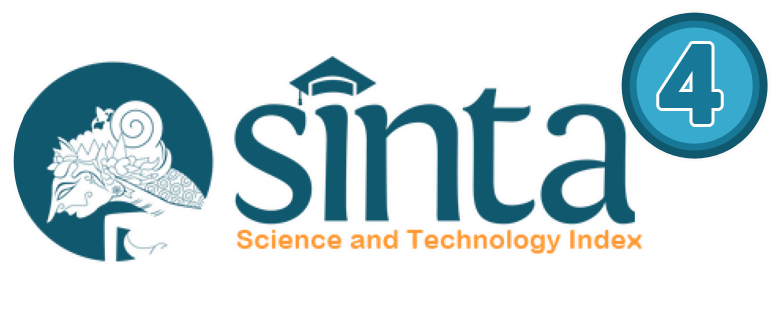Media Film untuk Pembelajaran Maharah Istima’ di Pondok Pesantren Modern Gontor Putri: Implementasi dan Analisis Respon Santriwati
 Abstract views: 811
,
Abstract views: 811
,
 pdf downloads: 1111
pdf downloads: 1111
Abstract
Teaching Arabic is a formidable challenge for some teachers. Not infrequently they encounter difficulties and obstacles when explaining a material to students. Therefore, teachers are required to be able to choose the right learning media so that students do not get bored and have a great interest in learning Arabic. Technological advances provide fresh air for teachers, because there are many modern media that can be used, one of which is using films. This study aims to explain the process of using film as a learning medium for listening skill of santriwati at Pondok Modern Darussalam Gontor Putri 1 and their responses during the learning process. The researcher uses a qualitative descriptive method with a field study approach. Data were collected using observation, interviews and documentation studies and then analyzed by means of observation during the learning activities using films. The result of this research is that film can be used as an interesting medium for learning the Arabic language maharah istima' and makes students more enthusiastic with a combination of audio and visual.
Downloads
References
Ama. “Mengenal Bahasa Internasional dan Lughotu Jannah dengan Idhof Lughowiy,” 16 Juni 2021. https://www.gontor.ac.id/putri1/mengenal-bahasa-internasional-dan-lughotu-jannah-dengan-idhof-lughowiy?utm_source=rss&utm_medium=rss&utm_campaign=mengenal-bahasa-internasional-dan-lughotu-jannah-dengan-idhof-lughowiy.
Arsyad, Azhar. Media Pembelajaran. Jakarta: PT Raja Grafindo Pustaka, 2006.
Asriyah, “Bahasa Arab dan Perkembangan Makna,” Diwan: Jurnal Bahasa dan Sastra Arab Vol. 3. No. 01 (2017): 36-49. https://doi.org/10.24252/diwan.v3i1.2911.
Asrori, Imam. Media Pembelajaran Bahasa Arab. Malang: CV Bintang Sejahtera, 2015.
Hamidah dan Marsiah. “Pembelajaran Maharah Istima’ dengan memanfaatkan media youtube: Problematika dan Solusi.” Al-Ta’rib: Jurnal Ilmiah Program Studi Pendidikan Bahasa Arab Vol. 8, No. 2 (Desember 2020): 148–60. https://doi.org/10.23971/altarib.v8i2.2282.
Huberman, A.Michael, dan Matthew B. Miles. Analisis Data Kualitatif Terj. Tjejep Rohidi. Jakarta: UI Press, 1992.
Husnaeni, Akmal, “Pemanfaatan Media Audio Visual (Film Berbahasa Arab) dalam Meningkatkan Istima’ Mahasiswa Pendidikan Bahasa Arab,” NASKHI: Jurnal Kajian Pendidikan dan Bahasa Arab Vol. 3. No. 02 (2021): 69-78, https://doi.org/10.47435/naskhi.v3i2.675.
INAYAHTUR RAHMA, FATIKH. “MEDIA PEMBELAJARAN (Kajian Terhadap Langkah-Langkah Pemilihan Media dan Implementasinya dalam Pembelajaran bagi Anak Sekolah Dasar).” Pancawahana: Jurnal Studi Islam Vol. 14, no. 2 (2019). http://ejournal.kopertais4.or.id/tapalkuda/index.php/pwahana/issue/view/780.
Maulida Eka Putry, Hesty, Venia Nuzulul ’Adila, Rofiatus Sholeha, dan Danial Hilmi. “Video Based Learning Sebagai Tren Media Pembelajaran Di Era 4.0.” Tarbiyatuna: Jurnal Pendidikan Ilmiah Vol. 5, no. 1 (2020). https://doi.org/10.55187/tarjpi.v5i1.3870.
Mohamad Miftah, Nur Rokhman, “Kriteria Pemilihan Dan Prinsip Pemanfaatan Media Pembelajaran Berbasis TIK Sesuai Kebutuhan Peserta Didik,” EDUCENTER: Jurnal Ilmiah Pendidikan Vol. 1. No. 04 (2022): 412-420, https://doi.org/10.55904/educenter.v1i4.92.
Mufidah, Nuril, Irtahat Isyaty, Nur Kholis, dan Saidna Zulfiqar Bin Tahir. “ICT FOR ARABIC LEARNING: A BLENDED LEARNING IN ISTIMA’ II.” LISANUNA Vol. 8, no. 2 (2018). http://dx.doi.org/10.22373/ls.v8i2.4561.
Muttaqien, Muhammad Khaerul. “Sejarah dan Perkembangan Gontor Putri,” Oktober 2021. https://gontornews.com/sejarah-dan-perkembangan-gontor-putri/.
Nurchasanah. “ALTERNATIF MODEL PEMBELAJARAN MENYIMAK BAHASA KEDUA/ASING LEVEL DASAR.” Sekolah Dasar: Kajian Teori dan Praktik Pendidikan Vol. 24, no. 1 (2015). http://journal2.um.ac.id/index.php/sd/article/view/1364.
Rahmawati, Novi. “Pengaruh Media Audio Visual terhadap Pemahaman Maharah Istima’ Bahasa Arab.” IQ (Ilmu Al-Qur’an): Jurnal Pendidikan Islam Vol. 2. No. 02 (2019): 217–31. https://doi.org/10.37542/iq.v2i02.34.
Roviin, “Evaluasi Pembelajaran Bahasa Arab,” Arabia: Jurnal Pendidikan Bahasa Arab Vol. 10. No. 01 (2018): 195-213. http://dx.doi.org/10.21043/arabia.v10i1.3577.
Sadiman, Arif S. Media Pendidikan: Pengertian, Pengembangan, dan Pemanfaatannya. Jakarta: PT Raja Grafindo Persada, 2006.
Shiny, Mahmud Ismail, dan Umar Ash-Shidiq. Al-Mu’inat al-bashariyyah fi ta’lim al-lughah. Cet. ke 1. Riyadh: Imadahsyuun al-Maktabaat- Jami’ah al-Malik Su’ud, 1984.
Shofwatul Fu'adah, “I'dâd al-Mawâd al-Ta'lîmiyyah li Mahârati al-Kalâm Fî Dhoui al-Madkhal al-Wadzhîfî Fî Maskan al-Khairiyyah Sukorejo Situbondo,” Alibbaa': Jurnal Pendidikan Bahasa Arab Vol. 2. No. 02 (2021): 141-160, https://doi.org/10.19105/ajpba.v2i2.4757.
Sugiyono. Metode Penelitian Kuantitatif, Kualitatif, dan R&D. Bandung: Alfabeta, 2018.
Suroiyah, Evi Nurus. “Efektivitas Penggunaan Media Film Dalam Pembelajaran Bahasa Arab di TPQ Sunan Muria Bendo Jabung Malang.” Muhadasah: Jurnal Pendidikan Bahasa Arab Institut Agama Islam Sunan KAlijogo Malang Volume 2, No. 2 (Desember 2020): 241–54.
Talizaro Tafonao, “Peranan Media Pembelajaran Dalam Meningkatkan Minat Belajar Mahasiswa,” Jurnal Komunikasi Pendidikan Vol. 2. No. 02 (2018): 103–114, https://doi.org/10.32585/jkp.v2i2.113.
Tami Gunarti, Tri. “PENGEMBANGAN MEDIA PEMBELAJARAN BAHASA ARAB BERBASIS AUDIO VISUAL UNTUK MENINGKATKAN MAHARAH ISTIMA’PADA SISWA-SISWIMADRASAH IBTIDAIYAH.” Awwaliyah: Jurnal PGMI Vol. 3, no. 2 (2020). https://ejournal.iai-tabah.ac.id/index.php/awaliyah/article/view/598/428.
Wahid, Abdul. “PENTINGNYA MEDIA PEMBELAJARAN DALAM MENINGKATKAN PRESTASI BELAJAR.” ISTIQRA’ Vol. 5, no. 2 (2018). https://jurnal.umpar.ac.id/index.php/istiqra/article/view/461/377.
Walimatul Fara, Elwin, dan M. Alfin Khoirun Naim. “MEDIA FILM SEBAGAI MEDIA PENINGKATAN PEMBELAJARAN BAHASA ARAB DALAM KEMAHIRAN MENYIMAK.” Seminar Nasional Bahasa Arab Mahasiswa II, 2018. http://prosiding.arab-um.com/index.php/semnasbama/issue/view/4.
Yuliastri Simarmata, Mai, Dewi Leni Mastuti, Muhammad Thamimi, Melia Melia, Ramadhan Kusuma Yudha, dan Aqis Yuliansyah. “MEDIA FILM SEBAGAI SARANA PEMBELAJARAN LITERASI DI SMA WISUDA PONTIANAK.” GERVASI: Jurnal Pengabdian kepada Masyarakat Vol. 3, no. 1 (2019). https://doi.org/10.31571/gervasi.v3i1.1200.
Authors who publish with this journal agree to the following terms:
a. Authors retain copyright and grant the journal right of first publication with the work simultaneously licensed under a Creative Commons Attribution License that allows others to share the work with an acknowledgement of the work's authorship and initial publication in this journal.
b. Authors are able to enter into separate, additional contractual arrangements for the non-exclusive distribution of the journal's published version of the work (e.g., post it to an institutional repository or publish it in a book), with an acknowledgement of its initial publication in this journal.
c. Authors are permitted and encouraged to post their work online (e.g., in institutional repositories or on their website) prior to and during the submission process, as it can lead to productive exchanges, as well as earlier and greater citation of published work (See The Effect of Open Access).
Alibbaa': Jurnal Pendidikan Bahasa Arab have CC-BY-SA or an equivalent license as the optimal license for the publication, distribution, use, and reuse of scholarly work.
In developing strategy and setting priorities, Alibbaa': Jurnal Pendidikan Bahasa Arab recognize that free access is better than priced access, libre access is better than free access, and libre under CC-BY-SA or the equivalent is better than libre under more restrictive open licenses. We should achieve what we can when we can. We should not delay achieving free in order to achieve libre, and we should not stop with free when we can achieve libre.

Alibbaa': Jurnal Pendidikan Bahasa Arab is licensed under a Creative Commons Attribution 4.0 International License
You are free to:
- Share — copy and redistribute the material in any medium or format
- Adapt — remix, transform, and build upon the material for any purpose, even commercially.
- The licensor cannot revoke these freedoms as long as you follow the license terms.











